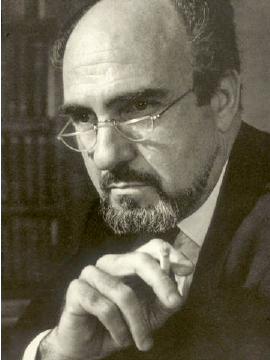 Henri Gastaut (1915 -1995) logy.
Henri Gastaut (1915 -1995) logy.- Medical Education and Early Career:
- Began medical studies in Marseilles.
- Excelled academically with the support of his wife, Yvette.
- Specialized in neurology and anatomo-pathology.
- Developed an interest in electroencephalography (EEG) post-World War II.
- Training and Mentorship:
- Traveled to Bristol, UK, in late 1946 to work with Grey Walter.
- Learned the fundamentals of EEG and its significance in epilepsy.
- Formed a lifelong friendship with Grey Walter.
- Return to Marseilles:
- Continued hospital responsibilities in neurology and pathological anatomy.
- Established a small EEG lab at Timone Hospital.
- Attracted young French and international fellows to his lab.
- Hosted visits from prominent figures in EEG during the Second International Congress of EEG in 1949.
- Further Training and Research:
- Spent three months at the Montreal Neurological Institute in 1949.
- Studied EEG symptomatology in various epilepsies.
- Examined the role of thalamic structures in generating generalized paroxysmal EEG discharges.
- Major Contributions:
- Described new EEG activities such as the "mu rhythm," lambda waves, and posterior theta rhythm.
- Studied EEG activities related to chronic cerebral circulatory insufficiency and transient ischemic phenomena.
- Explored the relationships between EEG and personality types, as well as states of consciousness.
- Systematically studied non-epileptic paroxysmal behaviors during sleep.
- Identified new forms of epilepsy, including photogenic epilepsy, startle epilepsy, and Lennox-Gastaut syndrome.
- Contributed to the understanding of various epilepsies and their treatments.
- Investigated the relationship between art and epilepsy, publishing studies on Van Gogh, Dostoevsky, and Flaubert.
- Establishment of Research Centers:
- Developed a research sector at Timone Hospital with Rockefeller Foundation support.
- Established the "Centre Saint Paul" in 1960 for epileptic children.
- Created the INSERM research unit in neurobiology in 1961.
- International Influence:
- Played a crucial role in organizing international EEG congresses.
- Contributed to the creation of the International Brain Research Organization (IBRO).
- Co-organized the Moscow Colloquium with Rusinov in 1958.
- Recognition and Honors:
- Promoted to "Commandeur de la Légion d'Honneur" the day before his death.
- Received honorary doctorates from universities in Bologna, Liège, Ottawa, and Shanghai.
- Recognized as a Corresponding Member of the Académie de Médecine and various international societies.
- Personal Interests and Legacy:
- Passionate about literature, opera, music, and art.
- Collected beautiful furniture and art, with a preference for classical styles.
- Enthusiastic sailor, stopped abruptly after a severe storm.
- Fascinated by skulls, later donating his collection to a museum.
- Retired from medicine and science, focusing on politics in his later years.
- Maintained connections with the village of Les Lecques, where he lived for over 40 years.
- Survived by his three children, all residing in Marseilles, and his devoted assistant, Mireille Taury.
- Final Years:
- Donated his library to the "Centre Saint Paul" and the "Timone Hospital."
- Reduced participation in national and international congresses.
- Became reclusive but remained engaged with life and people.
References
Dravet C, Roger J (1996) In memoriam, Henri Gastaut, 1915-1995. Epilepsia 37 (4):410-5. DOI: 10.1111/j.1528-1157.1996.tb00580.x PMID: 8603649.

